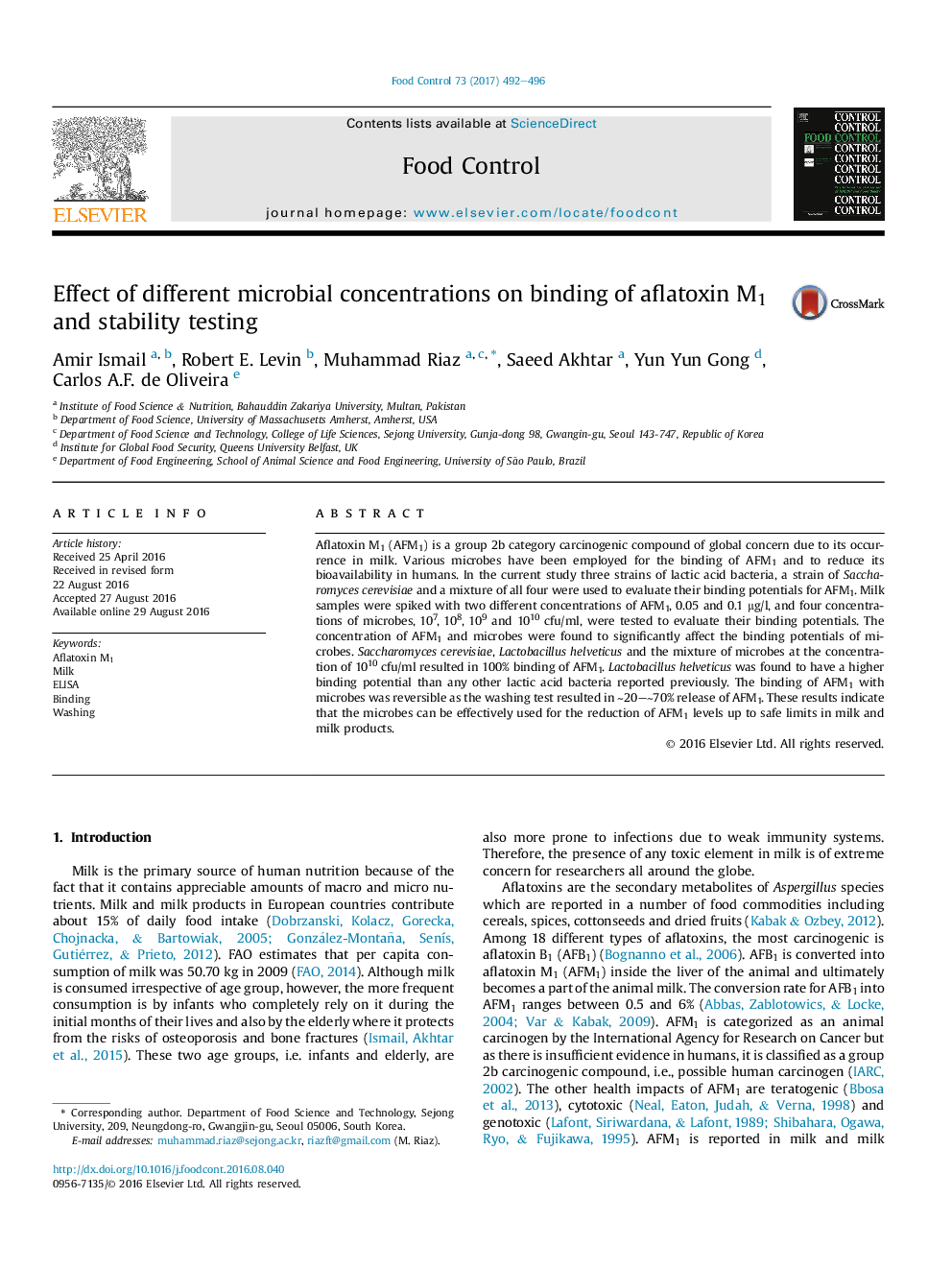| کد مقاله | کد نشریه | سال انتشار | مقاله انگلیسی | نسخه تمام متن |
|---|---|---|---|---|
| 5767668 | 1413202 | 2017 | 5 صفحه PDF | دانلود رایگان |

- Three strains of LAB and one of S. cerevisiae evaluated for binding with AFM1.
- Lactobacillus helveticus proved to have the highest potential for binding of AFM1.
- AFM1 binding percentage decreased with a decrease in microbial load concentration.
- PBS washing resulted in release of AFM1 from all the tested strains.
Aflatoxin M1 (AFM1) is a group 2b category carcinogenic compound of global concern due to its occurrence in milk. Various microbes have been employed for the binding of AFM1 and to reduce its bioavailability in humans. In the current study three strains of lactic acid bacteria, a strain of Saccharomyces cerevisiae and a mixture of all four were used to evaluate their binding potentials for AFM1. Milk samples were spiked with two different concentrations of AFM1, 0.05 and 0.1 μg/l, and four concentrations of microbes, 107, 108, 109 and 1010 cfu/ml, were tested to evaluate their binding potentials. The concentration of AFM1 and microbes were found to significantly affect the binding potentials of microbes. Saccharomyces cerevisiae, Lactobacillus helveticus and the mixture of microbes at the concentration of 1010 cfu/ml resulted in 100% binding of AFM1. Lactobacillus helveticus was found to have a higher binding potential than any other lactic acid bacteria reported previously. The binding of AFM1 with microbes was reversible as the washing test resulted in â¼20-â¼70% release of AFM1. These results indicate that the microbes can be effectively used for the reduction of AFM1 levels up to safe limits in milk and milk products.
Journal: Food Control - Volume 73, Part B, March 2017, Pages 492-496